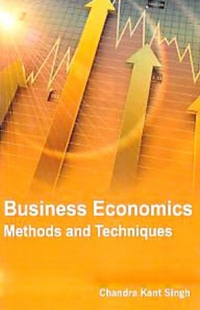Question
1.1. Define 'consumer surplus'. For a given demand curve, what happens to the consumer surplus as the market price rises and falls? (use a diagram)
1.1. Define 'consumer surplus'. For a given demand curve, what happens to the consumer surplus as the market price rises and falls? (use a diagram) 1.2. How does the price elasticity of demand for a product impact on the consumers' 'burden' of a sales tax on that product? Explain by using the examples of cigarettes and restaurant meals. (use a diagram) 1.3. Give an example of a real-world situation where you think the imposition of a tax would be beneficial. (Beneficial to whom?)
2.1. Using average and marginal cost curves and average and marginal revenue curves show a monopoly making and maximising economic profit. (Draw a diagram and explain it.) 2.2. Draw a set of revenue and cost curves that show a natural monopoly making a profit. Why is it bad economic policy for a government to break up a natural monopoly? 2.3. Indicate the equilibrium strategies (if any) in the pay-off matrix below, which shows the strategies and their revenue outcomes. Explain.
| Small firms: charge low prices | Small firms: charge high prices | |
| Large firm: charge low prices | $5m,$3m | $6m, $2m |
| Large firm: charge high prices | $6m,$4m | $7m, $3m |
3.1. Identify and define three kinds of unemployment. What kind of unemployment can the government reduce in the short run by manipulation of aggregate demand? 3.2. What is a 'conventional' Phillips Curve? What would a Phillips Curve look like if an economy was experiencing stagflation? 3.3. Are there economic costs associated with a persistently high rate of natural unemployment? Justify your answer.
4.1. Explain the relationship between the real interest rate and private consumption spending. Why might this relationship be stronger now than before deregulation of the Australian banking system in the early 1990s? 4.2. What is a Monetary Policy Rule? Who applies this Rule; how does it work? 4.3. What is the primary reason the RBA seeks to target the inflation rate?
5.1. What are the major components of expenditure which make up aggregate demand for goods and services? Which of these can be manipulated by fiscal policy? Which of these can be manipulated by monetary policy? 5.2. The current federal government's budget is in deficit. What role do automatic stabilisers play in this result? 5.3. The current unemployment rate is estimated to be approximately 6% and the natural rate of unemployment is estimated to be approximately 5%. From the perspective of a Keynesian income-expenditure model of the economy, what should be the government's fiscal policy stance? Use a diagram to illustrate answer.
Step by Step Solution
There are 3 Steps involved in it
Step: 1

Get Instant Access to Expert-Tailored Solutions
See step-by-step solutions with expert insights and AI powered tools for academic success
Step: 2

Step: 3

Ace Your Homework with AI
Get the answers you need in no time with our AI-driven, step-by-step assistance
Get Started


